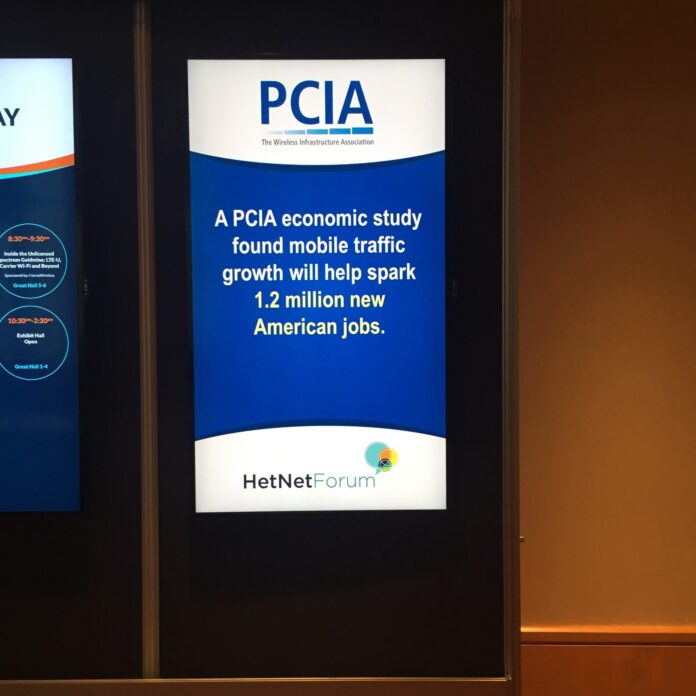HOLLYWOOD, Fla. – Anyone who thinks a slowdown in carrier spending is threatening the health of the infrastructure industry was not at PCIA’s Wireless Infrastructure Show this week. Record attendance at the show, record revenue for PCIA and a sold-out exhibit hall were all positive signs for an industry which has become the backbone of many others as more commerce and communication rely on mobile devices.
Tower executives were upbeat and optimistic, and during the conference American Tower put some numbers behind that optimism with a strong earnings report, following similarly positive reports from Crown Castle and SBA Communications last week.
Because of their long-term leases, tower companies may be less impacted than vendors by short-term shifts in carrier spending. After several years of heavy network spending, AT&T has pulled back in recent months and is expected to pick up the pace somewhat during the second half of the year. Sprint has been slower to spend than some expected. Verizon Wireless and T-Mobile US have been steadier spenders.
SBA Communications CEO Jeffrey Stoops explained that he sees each carrier investing differently, based on their unique spectrum positions and timelines. He said that AT&T Mobility and Sprint are focusing primarily on tower amendments, T-Mobile US is signing new leases to deploy 700 MHz spectrum, and Verizon Wireless is spending steadily on all fronts.
Waiting for Sprint
One theme throughout the conference was an eagerness for more clarification from Sprint on plans for its next network buildout. Vendors are ready to find out which sites Sprint will build or upgrade, which infrastructure service providers it will name and whether its next round of spending will include significant small cell activity.
“There is a next-generation network plan at Sprint that we know is being discussed, and all of us, I think, are hoping to get some clarity and vision on that in the near future,” said Stoops. “They’ve been basically at the same levels of activity for a year or two, which is less than at some years in the past from Sprint, particularly when they were first putting forth their Network Vision.”
“The majority of contacts remain very much in ‘wait-and-see mode’ as to what Sprint will do,” said Wells Fargo analyst Jennifer Fritzsche. “Interestingly, we heard from more than a few companies that they have begun to see some (small) new cell site deployment and orders.”
Vendors find new customers
Infrastructure vendors are becoming less reliant on service providers as enterprises become more aware of the value of good cellular service. Enterprises are investing in small cells and distributed antenna systems when Wi-Fi cannot cover their indoor connectivity needs.
Corning, JMA Wireless, SAC Wireless and SBA Communications all said that they are seeing enterprises step up to pay for all or part of their infrastructure in certain situations. Banks and private-equity firms are starting to finance infrastructure for companies, some of whom are able to lease the infrastructure from a third party and treat it as an operating expense.
Drone demand
Tower companies and infrastructure service providers are sending drones to the tower tops to collect data, reducing the number of trips for climbers. Hazon Solutions, RKC Site Solutions and Hawk Aerial all offer drone services for the wireless infrastructure industry and all were present this week.
RKC Site Solutions said it has eight drones deployed, and that they all stay very busy. The drones can capture 3D images of the tower tops and add a unique capability to the company’s construction and project management offerings.
Hazon Solutions has a background in unmanned flight services, and is entering the wireless infrastructure space with the help of Phil Larsen, former director of operations at Nexius. Larsen, who has also served as director of education and training at PCIA, sees drones as lifesavers because they can reduce the number of times a climber has to scale a tower, particularly in hazardous conditions.
Follow me on Twitter.

